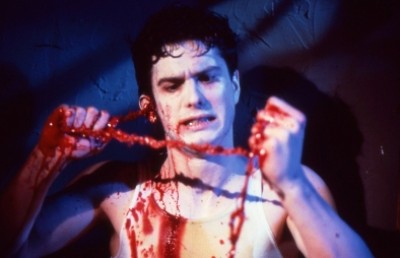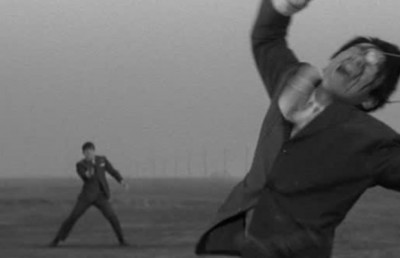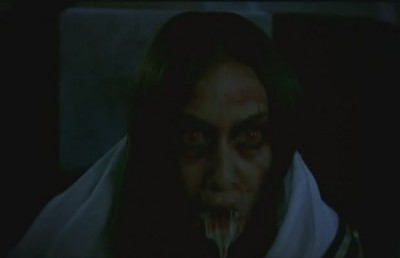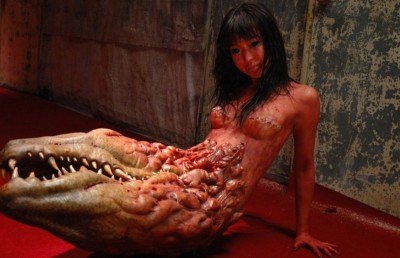Fantasia 2008: Blow by Blow
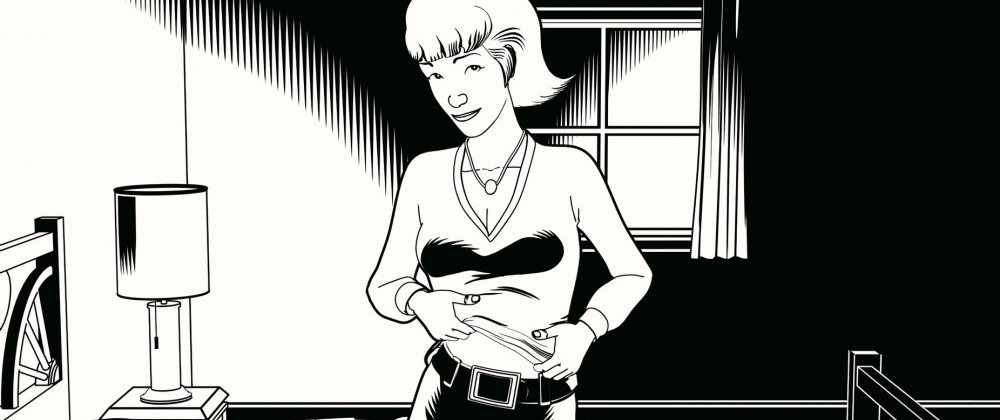
I’ve decided to follow Randolph Jordan’s lead this year and present a synoptic overview of this year’s Fantasia in a similar blow-by-blow account, taking care not to repeat any films. Only one repeat slips in, Tokyo Gore Police, largely to find a proper home for the wonderful photo I took of director Toshihiro Nishimura in full prosthetic regalia before the screening of the film (or was that after?). Whether one tries or not, even a random sampling of films will produce recurring images and themes that seem to sprout out from a well of collective ideas that cycle and renew themselves through the force of creative energy and artistic osmosis.
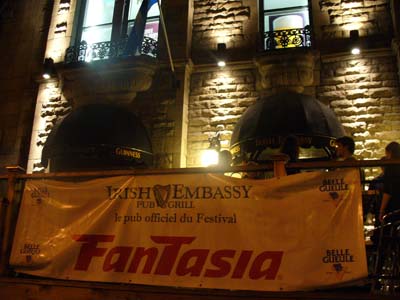
Art of the Devil 3 (Ronin Team, 2008, Thailand)
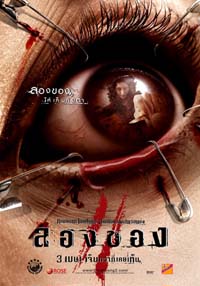
The Art of the Devil horror franchise is marked by gruesome torture set pieces that revolve around the black arts. In the first film of the series a wronged woman learns the black arts to get revenge on the family of the man who wronged her. In the sequel a group of young friends employ the services of a witch doctor to place a curse on an abusive high school teacher, only for the “bad Karma” to come back on them (as the witch doctor warned). The third instalment opens with the scene of a young man tearing into an old man’s forehead to claim a powerful ‘third eye devil’ totem. After this opening the story turns to a young man returning to his native home to live with his grandfather, aunt, and sister. We soon discover that the young man’s mother was murdered by his father who was lusting after a younger woman. The grandfather had attempted to summon the mother’s corpse when our hero was a boy but his inability to follow through on his part of the ceremony –reading an incantation– caused the rite to fail. He is now being groomed as an adult to repeat the ritual. Another young lady who will serve as the host for the mother’s soul is found and is tortured, her baby expunged from her body, and the mirror containing her ‘soul’ given to the uncle to bury. He is frightened in the woods and runs away without burying the token objects, which causes the woman’s tortured, angry spirit to remain alive and come after them for revenge. From this point on the film becomes, in the tradition of this popular Thai horror franchise, a series of extended, graphic torture set pieces as she ties up the grandfather and does a number on his eyes, mouth, tongue (cut off), etc. The sadistic violence is sheepishly offset at the end with a sanctimonious moral act on the part of a monk who tells the young survivor that evil is a choice a person makes and what comes around goes around –the Karmic circle– which is played out in the film’s experimental ending. As the final credits start we get a ‘one year later’ title card and a phone call is heard off-screen which suggests the evil circle will continue.
Home Movie (Christopher Denham, 2008, US)
Home Movie is another in the long line of reality horror films which is very effective at many levels. On the one hand it works within the limited range of the recent ‘reality horror’ cycle, but at the same level of quality as some of the better recent offerings (Cloverfield, Paranormal Activity, Rec). It also does more in terms of subtext, with a lot of interesting themes bubbling below its surface, namely the way it revises a 1970s ‘family-as-horror’ subject within a contemporary ‘reality horror’ aesthetic (in-camera editing, video diary structure, etc.). While I did not find it as out and out scary as Paranormal Activity, it has more of an emotional core and is better paced than many recent reality horror films. I love the way the film plays out all these family power struggles among parents/children, while at the same time making a clever reflexive point about the nature and power of the movie camera. Whoever actually holds the camera, is operating it, also contains the upper hand in the power struggle. Even though it works amazingly well on a TV with a small, intimate audience, which makes sense given the film’s title, it played well to a large audience.
Idiots and Angels (Bill Plymption, 2007, US)
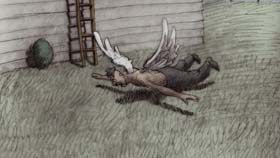
The animated allegory Idiots and Angels deals with a man’s coming to terms with his new found powers of flight. A man’s life of routine (wakes up to a chirping bird and an alarm clock every day, frequenting the same dull bar, etc.) is thrown for a loop one day when he sprouts wings. What is interesting is that the winged man is not sympathetic in the least, but becomes the hero by default because the other characters are less appealing than he is; namely the bar’s owner, who lusts after his cleaning lady (who falls in love with the winged hero) and the hero’s wings –which he steals to sabotage all nearby establishments so his bar will become the only choice in town. The allegory ends happily, with hero coming back to life (reborn through the barman’s stomach) and winning the girl. But in-between there are dark moments offset by touches of religiosity (white lights, angel wings, soaring in sky, rebirths, choral music, etc.).
The Objective (Daniel Myrick, 2008, US)

The Objective, helmed by the co-director of The Blair Witch Project (1999), is an engrossing, topical, desert war setting mixture of political drama, conspiracy allegory and supernatural thriller. The film starts off and ends strongly, with the pace slackening in the middle. Jonas Bal stars as Benjamin Keynes, a CIA agent ordained to oversee a troop of Special Ops Reservists led by Wally Hamer (Matthew Anderson) on a mission to track down a religious leader somewhere in Afghanistan (or so he tells them). The journey sets them across the harsh Afghan desert, where the mission’s true nature slowly becomes unraveled under the duress of mounting distrust, strange deaths, paranoia and unexplained phenomena occurring in the desert area. Keynes wonders whether the religious leader, Mohammad Aban, has gone mad, a la Kurtz, which introduces some colonial subtext to the story. The deeper they get into the desert, the more they descend into an increasingly bleak, inner space. The Joseph Conrad-like In the Heart of Darkness??/??Apocalypse Now first third gives way to an ambiguous ending that shows a heavy debt to the X-Files and 1970s conspiracy documentary. In the end we get a trippy moment where the hero imagines (?) being transported through an interstellar-like flight which ends with the hero in a lab, floating above a table being observed by humans from behind a glass room. Is he merely being examined by government CIA to study the unknown entity in the desert (the Vernon)? Or has he been abducted by aliens? And what is the Vernon? As the end credits roll the image is split to frame Keynes’ wife interviewed on a TV news show, where we learn that the hero’s voice-over narration has been framed as a journal read by the hero’s surviving wife, who wonders to a TV audience why the army does not search for her husband, who dedicated his life to his country.
Peur(s) du noir (2007, directed by many)
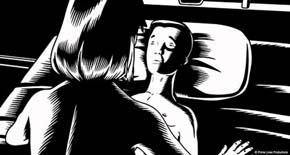
Peur(s) du noir is an interesting high concept film: invite some of the world’s hottest, youngest indie graphic artist/animators/filmmakers to weave their own unique take on what frightens them. What works well is the way the usual omnibus structure of one mini-film following another, linked by a framing device, is replaced by a more organic structure where the individual episodes bleed into each other. Some move forward for almost their whole length –like Charles Burns’ nightmarish coming of age story gone wrong– and others return intermittently, like the Italian Lorenzo Mattoti’s ‘dog stroll.’ (An aristocrat with a pointy, harsh face, taking his four vicious great Danes out for a stroll. Each return to his stroll sees him let a dog loose on a poor, unsuspecting victim. The final dog attacks him.) There was something of interest in each of the tales, with the first being the strongest. Also linking them was a graphic display of black and white forms mutating, while a female voice-over relates her own more personal, political, social fears (“I fear growing up to become a fat bourgeois” “I fear racism,” etc.). The stories are unique visually but share the black and white tone, some, like Mattoti’s, emphasizing the black pencil carbon look which seems so fitting to the subject. The first story begins with a close-up of a fat, bed bound man named Eric, who recounts his life story, cueing the flashback. As a young boy, Eric has a fascination with insects, which he takes into his room and studies in his makeshift lab. His latest treasure is an odd looking, jet black cross between a praying mantis and H.R. Giger’s alien creature. He hides it under his bed but it escapes, nestled somewhere inside his bed. He later takes the bed to college with him, where the shy, introvert meets a dashing, precocious, sexually liberated female student, Laura. They date, she moves in, she gets bitten by the insect, and turns into a literal praying mantis, dominating poor Eric like the proverbial alpha male (encapsulated in the moment where she mounts poor Eric, pins him to the bed and tells him “You’re my bitch now,” which elicited a great roar of approval from the packed Fantasia audience.) She begins to change physically, and is drawn in darker, coarser shades and lines of carbon black. The story ends back in the present, with the camera pulling back to reveal dozens of tiny slits on Eric’s body –entry and exit points for insect progeny– while his house is overrun by a horde of primate walking insects. The short is a cautionary tale about a meek boy who gets what he wishes for –a girlfriend– and then some. The story is reminiscent of Lucky Mckee’s Masters of Horror episode Sick Girls, only darker, and far more effective.
Small Gauge Trauma
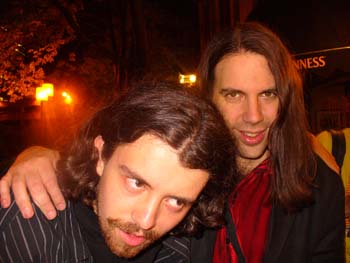
One of the annual highlights at Fantasia is the program of short films, “Small Gauge Trauma.” This year was no exception. Here are some thoughts on a few of the shorts from this year.
Pretty Little Thing (Fernando Fidel Urdapilleta Jiminez, 2007, Mexico) begins with a gorgeous teenage girl walking along a highway, nipples visible through her tight white shirt, while we hear her faintly whisper the words, “pretty little thing.” The image cuts to a flashback, where we see her in school. While her alcoholic father pimps her off to a slimy drug dealer/extortionist outside school grounds, she is being sexually harassed by her teacher. It seems in her neck of the woods, being attractive has its burden. The slime ball pimp stops off at Japanese shop to claim protection money. He takes a can of pop that was part of a war memorial, that the Japanese owner urges him not to take. He takes it when the owner is not looking. This cues another flashback (in b/w) which establishes the pop can as a relic from Hiroshima, which is both a memento but is also contaminated. The girl drinks it before the man gets a chance, which angers him, but he appears fortunate when the woman begins to get sick. She coughs up blood and falls to the hotel bathroom floor. She is transformed by the pop, and awakens a different woman, aggressive, confident, a literal man-killer with an impressive vagina dentata (seen in a quick close-up). The pimp turns meek and terrified as she forces sex on him by mounting him and castrating him (shades of Eric from Peur(s) du noir). It cuts back to her on the highway, being picked up by another man/victim.
1000 Year Sleep (Adam Wingard, 2007, US) is interesting mainly for its clever use of voice-over. We see romantic, lush images of four young women, in the prime of their lives, who, we are told by the omniscient (we assume) voice-over narrator, will all be victims of the same serial killer. The narrator wonders what their lives would have been like had their fate not taken such a tragic path. Who they would have grown up to become. Images of them alive are intercut with their lifeless bodies. We see the killer carrying one of their corpses to be thrown off the edge of a cliff. As the VO continues, the on-screen killer slips on a rock and falls to his death, at which point the voice trails off as well, leading to the surprise twist: the VO narrator is in fact the killer and not the omniscient narrator we were led to believe. While clever, the twist unfortunately harms the overall mood by shifting it to a final comic mode.
I Love Sarah Jane (Spencer Susser, 2008, Australia) is an novel take on the zombie mythology which depicts the survivors as young children and teenagers, a sort of “Lord of the Flies” meets Dawn of the Dead. An opening right to left tracking shot following a boy on his bike reveals a post-apocalyptic suburbia, littered with corpses, overturned cars, and fire pyres. A taller boy seems to be the leader, or at least the most aggressive of the bunch. They tease and torture a zombie tied between two trees. The motley group of teens and adolescents enter a home, where they find a teen girl sitting quietly watching TV. The smaller, quiet boy of the group, 13 year old Jimbo, is attracted to the girl and sits next to her. They make small talk, consoling each other over their losses (she her parents, he his pet animals). When the skinny boy comes across a lawnmower he takes it out and mangles the zombie’s face with it (homage to Braindead ?). The sadistic boy then fires a blow gun at the zombie, leaving him a pathetic torso. While the children argue with themselves, the zombie attacks and bites the taller boy in the leg. Before he fully turns to a zombie, the teen girl calmly takes a shovel, smashes the boys head with it and puts her father –the tree-tied zombie– out of its misery. The shot then cuts to Jimbo, who has a sheepish, proud smile on his face, as if to say “that’s my gal, the heroine!”
Eel Girl (Paul Campion, 2008, New Zealand) is a satisfying one joke film with brooding mood and atmosphere. An inquisitive scientist enters a room housing a lab subject: a sexy woman with webbed hands and scales over her face. The eel girl enters a bathtub filled with jet black goo. As she exits the tub the scientist leaves his safe room to join her. They kiss and then she eats him whole, expanding her mouth like a snake. The final shot is an overhead angle of her in the tub rubbing her expanded belly. There seems to be a running theme here, of heroines who are not afraid to tackle a situation head on.
Electric Fence (Matt O’Mahoney, 2007, US) has thematic links to Pretty Little Thing –genital castration– and Frank Henenlotter’s Bad Biology – a penis with a mind of its own. A man getting satisfied orally by an epileptic hooker has his penis nearly ripped off when the hooker goes into seizure. Importantly, it is clearly established before this event that the man is heterosexual, when we see him eyeing his neighbor’s breasts as she bends down in the apartment hallway. The woman is a single mother with a young boy, who we see next to his mother during the hallway voyeur scene. After the sorry encounter with the epileptic hooker, he rushes to the hospital, where is told that his penis will never function again; meanwhile, across town, a pedophile is being tracked down by the police. A chase ensues and the pedophile is hit fatally by a car as he runs out across the street. This sets up the Mad Love/Beast With Five Fingers scenario. The doctor offers to transplant the dead pedophile’s penis onto his body. The operation is a success, but with one caveat: the man is now being led by another ‘head’: that of his transplanted pedophiliac penis. In Mad Love the pianist who gets his hands crushed is given the hands of a killer, and then becomes possessed by the killer’s death drive. Same idea here. In a doubling of the scene where he was ogling the mother’s breasts, he now looks right past the mother to her young son! He tries his best to suppress his desire for the boy. When she asks him if he can look after her son while she goes out for an emergency call, we see him get an immediate erection at the thought of being alone with the boy! She insists on the favor, and, with his resistance lowered, accepts. He tries to safeguard against his libido by taping his groin with duct tape –a home made male chastity belt. But his urge is too powerful and he untapes himself. The framing of the next scene foreshadows a real horror moment, up there with the scissor to lips climax of Doug Bucks Fantasia all-time favorite Cutting Moments. (Why is self-mutilation so big these days?) We see a small cosmetic scissor on the vanity chest, in the extreme foreground, taunting us, with the seated character in the right foreground. We know it is only a matter of seconds before the character will see the scissors and take action. With alarming realism for a prosthetic penis, he begins to cut through the tip of his penis with the small, curled scissors. Director O’Mahoney makes the scene excruciating by continually cutting away to the man’s grimacing face, giving the audience a breather and the hope that the horror is over, only to cut back to a close-up of the penis. This cutting away and back feels interminable (by my count it occurs about 7-8 times), until he finally cuts through the tip of the penis. A major ‘Ouch’ moment was shared by all men in the audience.
Limoncello (Jorge Dorado, Luis Alejandro Berdejo, Borja Cobeaga, 2007, Spain) is an ambitious, and largely effective trilogy of revisionist western tales, all shot at Almeria, home of the spaghetti western, and coming to it with a decidedly comic yet respectful tone. The first story is an intelligent parody of the classic voice-over narration that depicts the on-screen character as a ‘hero’ to all (“Joe is a good man.”), a man respected by everyone in the small town. In the same objective manner, the voice-over relates a final bit of action. The man steps out one night to catch some fresh night air, walks through the town, shoots an innocent man coming out of the bar, cuts his legs off and then buries the body. So much for the reliable narrator! The best of the tales is the middle story, spoken in Italian, starring a beautiful young woman, Tiziana, and a mentally challenged man, Luigi, who seems to be her right hand man, or possibly brother. With the aid of a necromancer, Zaccariah, she brings a dead man, Nicola, back to life, but in the painful form in which he died. She asks him for the name of his murderer, and once told, gives Nicola the chance to live on in pain or die again; he chooses the latter. The short ends with the woman murdering to find out the whereabouts of a buried treasure which contains a series of voodoo dolls. One of the dolls has pins stuck in its head, and when she removes the pins the seemingly mentally challenged Luigi turns normal. It ends on a stylish visual note: a reddish freeze frame on Tiziana. The last story was the weakest of the three, namely because of its reliance on a less than startling twist ending. A sheriff is so dirty that the townsfolk plead with him to shower before the imminent visit of a governor. He does so under one condition: that he sleep with the town’s attractive barmaid, which seems like a disgusting proposition. In the end, the townsfolk prep the town for a non-existent visit. The twist? The barmaid had rigged the whole ploy to sleep with the sheriff.
The final short of this year’s Small Gauge Trauma program, Snip (Julien Zenier, 2008, Spain/France), ratchets the audience pain level to the maximum. A young, bald man strips, stands in front of a mirror, straight razor in hand, and begins to self-mutilate himself, beginning with his arm, moving to his chest, and then the top of his head (shot from an overhead angle that gives us full visual disclosure, whether we want it or not). Still hurting from the painful penis self-castration of Electric Fence, when it became obvious what was in store, a male member of the audience spoke for many when he groaned, “Not again!” (I think the Fantasia programmers are starting to develop a nice sadistic streak toward their audience, continually pushing that proverbial envelope to the extreme!) The camera alternates between the mirror image and the real image, with a lighting that recalls an Italian Renaissance painting rather than torture porn. It ends with the man dropping the razor, and drinking a glass of water, with the camera ‘obscuring’ his image by being shot through the glass. (Nice. The director gives us an unfettered gaze at all the gore and then obscures this innocuous moment!) This marks the third film this year to feature a character being skinned alive (we see it in also in Trailer Park of Terror, and the third film escapes me now). What is interesting is how Snip stands the recent wave of torture porn on its head. Where can you go from so many films that feature humans inflicting pain on other humans? Naturally, have the person inflict their own pain on their own body. It strangely echoes the shift in critical theory of the horror film and the stalker/slasher genre that saw the audience identification process shift from one of sadism (identifying with the killer, aided by frequent use of POV shooting) to masochism (identifying with the final girl, the victim). Appropriately, Nacho Cerda is thanked in the closing credits.
X-Cross (Kenta Fukasaku, 2007, Japan).
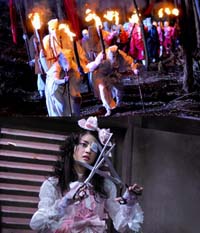
X-Cross is an odd film that tries to be a lot of things at once, and eventually settles on a horror/action spoof. The film cleverly uses the cell phone as a device to flashback the narrative to an earlier point and then replay it forward from the vantage of another character. Two woman who are opposites, Shiyori and Aiko, go to a resort cabin in the isolated woods. An argument separates them, casting them off on their own separate nightmares. The promiscuous Aiko is chased by a woman sporting a huge scissor whose former boyfriend was seduced by Aiko; while Shiyori is chased by the village’s limping residents (we learn that every person in this community has their ankles snipped so they can not run away). The area hides a perverse closed community with a bizarre folkloric leg fetish tradition (to add to the previous point): routinely a woman is sacrificed by having her legs cut off. Aiko’s battle grows to a series of hilarious Miike-esque one upmanship battles. The best being a stalk and chase fight in a public toilet. The narrative structure returns back in time to replay events as experiences from the differing perspectives of the two female leads. What is actually disappointing is that director Kenta Fukasaku, son of Kenji Fukasaku, could have generated some genuine thrills had he continued in the direction of out-right horror. The early scenes create a real sense of menace (a ritual site where corpses of earlier sacrificed woman hang crucified is especially imagistic) that are consciously undercut by overly heightened formal devices (loud sounds, air sounds that accompany self-conscious swish pans and fast track in shots to characters, etc.). The unseen hero who calls Shiyori to warn her gives us the back-story: the town, Ashikari village, sacrifices women in this way to ward off natural disasters. The plot leads us to believe that Aiko may be part of the conspiracy to have Shiyori brought to the village as the next sacrificial victim (a la Wicker Man), only for it to be revealed that she was plotting to bring her there to get her to reconcile with the boyfriend. Hence an act of virtue rather than evil conspiracy.
Tokyo Gore Police (Toshihiro Nishimura, Japan, 2008)
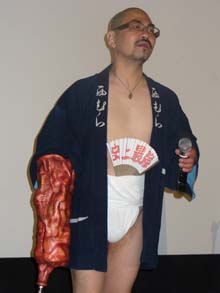
The buzz before, during and after this film in the sold out Hall building midnight show was a testament to what Fantasia is all about: pure unadulterated energy transmitted from audience to screen and back out to audience. Nishimura’s gory balls to the wall punk science-fiction film was met with crazed joy at every step of its blood-soaked path. Although the film may be the ‘wettest’ to play at Fantasia this year, it is by no means the most violent or disturbing because the violence and prosthetic makeup effects (director Nishimura is primarily an effects artist) aim for over-the-top hilarity rather than realism. In the near future a special police unit is designed to weed out the world of ‘engineers,’ people who have died but returned to life as killing machines. The only way to identify them is through a key-shaped fleshy part embedded in their stomach, which must be severed to kill them. The lead, a female cop played by Audition star Eihi Shina, has her own personal traumas going back to witnessing her mother’s attempted suicide by slashed wrist. In one of several nods to Bladerunner, Shina discovers that she too is an ‘engineer’. The film is well-paced, visually inventive, and filled with bizarre touches of surreal violence; like a machine gun penis; a blood shower which Eihi walks through with an opened umbrella, etc. (echoing the amazing umbrella showdown in Johnny To’s Sparrows, which also showed at Fantasia). The funniest touches occur in the Starship Troopers influenced commercials, including an hilarious promo where teenage girls market special suicide razors which come in an assortment of fun colors, “taste nice,” and “don’t hurt much.” Only at Fantasia.
Trailer Park of Terror (Steve Goldmann, 2008, US)
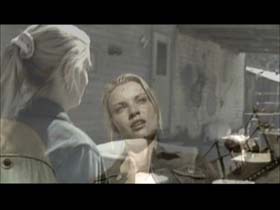
Directed by former Montrealer Steve Goldmann (2008), Trailer Park of Terror was far more enjoyable than it had any right to be, a low budget but energetic romp that saw director Goldmann in full homage mode (including nods to Demons, Rob Zombie’s films, Universal horror, Romero, Texas Chainsaw Massacre, etc.). The 1981 prologue introduces the white trash setting. An attractive young woman, Norma (Nichole Hiltz), prepares for a date with a man from outside her poor social class (the proverbial boy from the other side of the tracks). Her three male friends harass her date, and cause him to (accidentally?) fall backwards and impale himself. She is angered that her one ticket out of this hellhole is wiped out, and takes to leaving the trailer park area, where she encounters a modern Lucifer in the figure of a tall, black dressed, long haired man first seen urinating in a field (in a subtle touch, we see a puff of steam around his groin, suggesting his acid-like urine is scorching the grass). The dark figure senses her anger and thirst for revenge and offers her a “deal.” She returns with his shotgun and proceeds to kill her trailer park neighbors and then set the place on fire. The story flashes ahead to current day, and a van transporting a group of misfit teens led by a well-meaning pastor hoping to rehabilitate them. The van crashes and they have to seek help at a nearby community. They fall upon the trailer park area from the prologue, where they are met by a sexy blond, Norma from the prologue, looking only slightly older than last seen. Soon all hell breaks loose as they come face to face with living undead from the past (director Goldmann referred to them as reapers rather than zombies, but the effect is the same). The first to be seduced/killed is the pastor. Norma mounts him and halfway through the sex the pastor gets remorseful and wants to stop the sex. Bad move. Norma’s first ‘switch’ to her undead state is done in a creepy touch. Her single eye pops out of its socket, and she quickly sets it back in place. Norma is the only reaper from the set of characters established in the prologue that makes an effort to maintain her good lucks, seen in front of a vanity mirror gluing skin to her face (a homage to Jackson’s Braindead perhaps?). A good way to describe this might be to ask yourself, what would the characters from Rob Zombie’s Devil’s Rejects be like if they died and came back as grim reapers/zombies? Zombies have been done to death, but if you can put a new twist on it, or spruce it up with something inventive, fans will buy it up; and that’s what the Fantasia crowd did with Trailer Park of Terror. Where else will you find a rockabilly guitar-hero zombie? Or a zombie that films home made porn? Or an Asian massage therapist zombie who rips off a man’s penis when her attempts at masturbating him don’t generate an erection? Did you ever wonder what a stoned out person would do if they were confronted by a zombie? All these questions and more are answered. In keeping with this year’s theme of live skinning, is the scene where one of the victims is flayed alive by a zombie (who made pork rinds when alive) and then dropped whole into a deep fryer. (“’Cause everything tastes better fried!”) In the Q & A we learn that the film was shot –amazingly– in 18 days; it was based on a comic book; the devil is played by country and music star Trace Adkins. Nicole Hiltz, who plays Norma, also starred in the Trailer Park Movie, making her perhaps the only actress to have starred in two films with Trailer Park in the title! And country-music-video director Steven Goldmann hails from the Cote-St.Luc area of Montreal.
Stuck (Stuart Gordon, 2007, US)
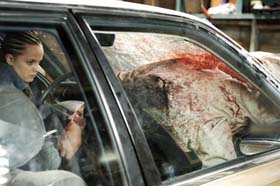
The old adage reality can be stranger than fiction is in evidence in Gordon’s latest film, Stuck. While watching the behaviour and actions of lead character Brandi (Mena Survani) I had to keep reminding myself that her actions are plausible because they actually did happen. A nurse (Brandi) driving home from work runs over a man, Tom (Stephen Rea), who has been having a bad day which will get worse, much worse. The man gets catapulted through the car’s windshield, but the panicky Brandi decides to drive all the way home with the man ‘stuck’ in her windshield. Rather than tend to the poor, bleeding man, Brandi acts as if she is the one being put out by this inconvenience. Tom tries to raise enough noise to get someone’s attention, and it succeeds with the next house neighbors, but he is foiled by the husband’s egoistical attitude. For the remainder of film we cut between Brandi at work, Brandi with her drug selling/pimp boyfriend, and then Brandi and her boyfriend trying to dispose of Tom. Just how a cute, petite woman who is a nurse, a vocation trained in helping people, thinks that killing the body she ran over is the solution to her problem is what gives this film its twisted energy. In an earlier scene where Brandi discovers her boyfriend sleeping with another woman we get another glimpse of Brandi’s true nature. She hits the woman with a pan and then throws the nude woman out of the apartment into the corridor. (I’m sure this type of stuff has been embellished from the core real event, which is the hit and run and hide act.) The audience clearly sides with poor, down on his luck Tom, and when the film shifts into a cat and mouse game between Brandi, Tom and the boyfriend, we sense –and hope– that there can only be one winner: Tom.
Red (Lucky McKee, Trygve Allister Diesen, 2008, US)
Red ended up being one of the most dramatically compelling films of the fest. When done well, the theme of justified moral retribution leads to one of the most satisfying of audience emotions. And how much more morally justified can it get than three rich, spoilt teenagers killing a retired man’s sole living companion, a dog (the titular Red)? To make matters more emotionally wrenching, the dog was a 50th birthday gift from his deceased wife, and holds a warehouse of emotional significance for the widower. The man, Avery Ludlow, is played by Brian Cox, who gives one of the best performances at Fantasia this year. Two of the teens are brothers, Danny (Noel Fisher), the vindictive, hot-tempered alpha-male who did the shooting, and Harold (Kyle Gallner), the nicer, repentant one, and Pete (Shiloh Fernandez), son of a poor, white trash family, whose parents are played by Amanda Plummer and Robert Englund. The father of the two boys, Michael McCormack, is played with just the right amount of arrogance by Tom Sizemore. Kim Dickens plays sympathetic journalist Carrie Donnel, who does the first TV interview with Avery which gets the story its notoriety (luckily there is no romance). Avery is the archetypical street smart, even tempered, wizened man who tries to get resolution to the shooting of his dog using every rational and legal way possible, and who only resorts to escalating the situation when he has no other option. The film is effective specifically because it functions at this slow burn level, depicting Avery’s measured attempts to use common sense and the law. His first move is to appeal to the father’s sense of parental authority, but it falls on deaf ears essentially because Danny’s alpha male persona is a direct reflection of his father. The film depicts the domestic nightmare of this family in subtle ways. For example, the first time Avery visits the McCormack household a 30-something year old lady answers the door, holding a duster in her hand. Her hesitant behaviour gives the appearance that she is the maid; but only later to we realize she is the wife. In a later scene we see signs of physical abuse on her face. In an interesting parallel to Stuck, in both films the perpetrators of the violence, Brandi and the McCormack’s, react to the victimized person as if they are the ones being victimized. Both Brandi and different members of the family at various points address the victim with aggressive arrogance: Why are you doing this to us? While everything in this small, conservative town seems to conspire against him, Avery exudes a quiet confidence that is the residue of a long, hard and traumatic life. Avery is the living embodiment of the old adage, ‘what doesn’t kill you makes you stronger.’ This hits hard when Carrie manages to coerce out of Avery the tragic circumstances surrounding the death of his wife and two children. Avery’s older son, who had a history of mental problems after a brief military duty, burned his mother and younger brother to death, before killing himself. Avery begins to stalk Danny everywhere he goes, biding his time and looking for the right moment to strike. This occurs when he spots Danny going on a temper tantrum after striking out at a baseball game. Avery follows the teens into town, making sure whatever action occurs does so within view of witnesses. He goads Danny into attacking him with his baseball bat. Avery turns just enough to take the first blow to his shoulder, and then disarms Danny of the bat, hits him with the bat in the gut, and grabs him by the neck to give him a stern, elderly talking to. Everyone in the audience reveled in the moment vicariously because the moment was set up so methodically. Avery risks his life, perhaps his only misguided step, when he digs up the body of his dead dog and brings it to the front porch of the McCormack’s house. Avery survives the first confrontation and takes Danny hostage, but the ensuing car chase between him and the boy’s father leads to an accident which leaves him incapacitated (this accident and the aftermath is handled very obliquely, and the audience is left uncertain as to what has transpired). He wakes in the middle of the woods and the film’s final confrontation, which sees Avery hit by a few gun shots, but not fatally, and the two brothers shot dead –one by his father’s own rifle– and the father left severely wounded (not sure if he dies). This leads to the film’s only wrong note: a melodramatic moment where Carrie drops off a puppy, against Avery’s wishes, before leaving to take up a new job in New York. The film ends with Avery warming up to the cute dog. Although the moment goes for the sort of easy, cheap emotion the rest of the film avoids, one can’t feel too bad about something positive entering into Avery’s life.
Not Your Typical Bigfoot Movie (Jay Delaney, 2008, US) and La Bête du Lac (Nicolas Renaud, 2008, Canada)

Lifelong friends Dallas Gilbert and Wayne Burton of Portsmouth Ohio have reduced the meaning in their life to the pursuit of truth, the truth of the infamous monster Bigfoot, whom they have been tracking (‘research’ they claim) for well over a decade, without the real benefits of fame (notoriety does not bring money). With Not Your Typical one isn’t entirely sure where the filmmaker stands with respect to his subjects, or whether there is a hint of irony in the discourse. We do see a pathetic side of both characters, especially Wayne, who is dirt poor, has no self-esteem, talks about an attempted suicide, and is tricked by a snide radio host into committing an on-air lie. The film does reveal one contradiction in the methodology of the monster seekers which is never brought out. While both men go on and on about the importance of their research, their many photos, videos, etc. that act as collective proof of the monster’s existence, at the end Dallas concludes that one either sees Bigfoot or not. What then is the purpose of all this empirical research if it all comes down to ‘belief’? The answer is partially answered by the far more contemplative and philosophical La Bête du lac, which underscores the cultural importance of myth, and the need to believe in what is not easily proven through empirical means.
Echoing the middle story of Peur(s) du noir, about a mythical monster haunting the plains, which may or may not be a crocodile, La Bête du Lac, one of the festival’s standout documentaries, chronicles the myth and history of Quebec’s own Loch Ness monster on Lake Pohénégamook of the Temiscouata (South Eastern Quebec) area. Director Nicolas Renaud blends more traditional subject interviews with people of the area who have encountered the beast, in one way or another, believers, doubters, and ‘agnostics,’ with poetic interludes around and deep within the lake which deal with the myth from the point of view of subjectivity, perception, and imagination. Not Your Typical Bigfoot Movie and La Bête du Lac are diametrically opposed. Not lets the story speak directly through the voices of the subjects, a la direct cinema, while La Bête du Lac has authorial voice-over interjections and poetic visual interludes that add to what the viewer will come away with. Not is very local and does not take the subject beyond the space/location of the two characters, while La Bête du Lac traces the monster to many eyewitnesses and other times, cultures, and places. Renaud’s film tries to make sense of the lake creature within the context of not only fact –does any such beast actually exist– but asks what such a need for a belief can say about the people and about humanity in general. As if the treatment of the poetic and the local history of the myth were not enough, director Renaud also thickens the film’s material by incorporating Native religion, tradition, and folklore into the equation. A ‘heady’ talking heads documentary to be sure.
Pig Hunt (James Isaac, 2008, US)
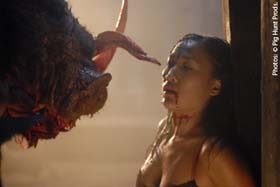
Jack and his lovely Asian girlfriend Brooks drive up with a few friends to his uncle’s cottage in the deep woods to do some ‘back to the roots’ pig hunting. Once there they hear about a legend of a 300 pound wild boar that has been stalking the grounds for years, accounting for the many people who have gone missing. The deeper they get into the woods, the more complicated the trip becomes, starting with the unwelcome appearance of Jack’s old, red neck friends, a muscular, hippie-like black man who carries a big machete, a bevy of beautiful Amazonian women who live on a commune, and, last but not least, the killer boar (shades of Razorback). Director Isaac foregoes the streamlined approach by throwing up every possible mishmash of horror film reference and villain. For example, the protagonists encounter red neck hillbillies, crazy hippies, and a cult like leader who worships a killer boar (although the black man seems like the head of the cult, this is unclear, and maybe it is the marijuana growing women who are the real leaders). The latter led me to ponder a mild pseudo-feminist subtext in the film. For starters, the men in the film are continually fooled to think of the opposite sex as the weaker, fairer, and non-threatening half, but this cliché gets them continually in trouble. Brooks emasculates the men when she demonstrates her superior shooting skills to all the men but Jack. When one of the rednecks comes on to Brooks in a sexist manner and she replies, “Does this make you feel like a man,” he replies wholeheartedly, “Yes.” Another man gets derailed by the male wish fantasy scene of a dozen gorgeous woman skinny dipping under a waterfall. He practically has to rub his eyes to believe what he is seeing. Easily seduced, he is brought back to the commune, where he is set up –pampered, fed, drugged– as a sacrifice to the killer boar. Even the boar is female (piglets are found)! The isolated rural environment, with the added appearance of creepy locals (either inbreds, red necks, hillbillies, etc.), links Pig Hunt to a group of other films that entertained at Fantasia: Trailer Park of Terror, Dying Breed, Babysitter Wanted, and Not Your Typical Bigfoot Movie).
The Midnight Meat Train (Ryuhei Kitamura, 2008, US)
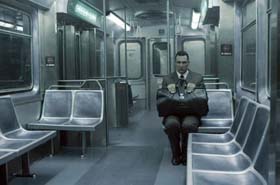
Although there is so much that one regrets about The Midnight Meat Train (based on a Clive Barker short story) in terms of what could have been, and scenes that do not work, one needs to at least acknowledge an attempt to make a horror film that isn’t a remake, sequel, reality horror, torture porn knock-off or survivalist horror film. Yes it is a serial killer film, but one with a difference and a twist that brings the film into another territory altogether: a Lovecraftian supernatural mythos. Unfortunately, this one element screams for expansion, and, if properly expanded, could have made this a modern classic, or at least have left us with an enduring villain in the mold of the Candyman or Freddie.
A young photographer, Leon (Bradley Cooper) and his girlfriend, waitress Maya (Leslie Bibb), become embroiled with a mysterious character, Mahogany (Vinnie Jones), who works as a butcher by day and spends his nights riding the subway. Leon rescues a young woman from a group of thugs but she is sent from the frying pan into the lion’s den when she steps onto the train car ruled over by Mahogany. When Leon sees her image in the following day’s newspaper as a victim of a violent murder he begins to spy on Mahogany. His spying becomes an obsession that weighs on his career and sends him into a downward emotional spiral. After witnessing the murder of two teens –which Mahogany does nothing to hide from him– Mahogany catches him but, surprisingly, lets him live. Leon wakes up to find a new marking on his chest (which we also see on the body of the black female lieutenant). At this point the film begins to underscore an almost psychic link between Leon and Mahogany, like with the mirroring slow dolly-in shots to Leon’s face and the face of Mahogany in the large black & white photograph of Mahogany at Leon’s art show opening. The film sets up a nice visual contrast between the metallic blue world of the underground subway and the external areas. And when in the underground there is a real sense of menace and that we are entering a gray area between reality and nightmare. The latter is achieved through the great art direction, lighting, and camera movement. The film is marked by a kinetic energy achieved largely through a constantly moving camera, although a good many of these are of the CGI variety –like the one that dollies back through succeeding train cars– there are still a lot of inventive camera movements, like the dollies along the platform, the crane ups to reveal the 4th wall in rooms, etc. There is a lot of CGI in this film in general, especially in much of the violence (the bullet shot to the head of the black man, for example). Kitamura’s background as an action director is in evidence in the way even the murder scenes are choreographed like action scenes, with quick cutting, fast paced camera movements, and intercuts from the inside of the moving train to the outside to increase the sense of speed. While there is much to laud, the film also contains a few incredulous scenes, like the extended scene where Maya and her friend Jurgis (Roger Bart) break into Mahogany’s apartment and snoop around long enough to be caught by Mahogany returning home. Their most interesting find in Mahogany’s apartment is a log book of the subway schedules which dates back to 1911. Maya shows this evidence to the police, but she does not heed their request to hand the log in to them. Instead Maya gets caught up in Leon’s nightmare world after seeing evidence of Mahogany’s handiwork in the train. When the police do not help her she takes things on her own and ends up victimizing herself in the film’s bleak ending. The illicit killings of subway riders is revealed as part of a widespread conspiracy which goes beyond Mahogany. When Leon discovers the train car full of hanging corpses the eerie conductor tells him, “Please, step away from the meat.” He refers to the humans as meat because humans are used as feed for an alien or supernatural species of snake-like demons who roost below in the subway system. The film climaxes in a dungeon like cave somewhere off the tunnels which is the dumping ground for the human remains. Within the improvised catacombs are the supernatural monsters which the human minions have been serving for generations. At this point comes the film’s big reveal, which sacrifices profundity for the shock. Once Leon kills Mahogany the conductor admits that he did not have what it takes anymore to carry out his duties as food supplier for the creatures. He proceeds to rip out Leon’s tongue and eat it, while filling him in on their duties: “We protect and nurture them.”
The conductor kills Maya, stabbing her unconscious, inert body as it lay over a heap. Mahogany’s death marks the end of a cycle, and the follow-up scene where the black female detective hands over the subway log book to Leon marks the beginning a new cycle, with Leon the new ‘Mahogany.’
Dying Breed (Jody Dwyer, 2008, Australia)

The Dying Breed won’t win any prizes for originality, invoking Deliverance, The Texas Chainsaw Massacre and The Hills Have Eyes, but competes well where execution is concerned, with a relatively low gore count, but a violence that comes quick and furious. Two young couples, Nina (Mirrah Foulkes), her considerate boyfriend Matt (Leigh Whannell), Matt’s alpha male buddy Jack (Nathan Phillips from Wolf Creek) and Jack’s new squeeze Rebecca (Melanie Vallejo), set out on a nature/hunting trip into the wilds of Tasmania, Australia, in search of an apparently extinct species of tiger that once populated the area. The film begins, however, with a period epilogue detailing a prison break from the notorious Tasmanian prison camp in 1822 by Irish convict Alexander Pearce, aka the Pieman, who survived nine weeks in the wild by cannibalizing his comrades. The film flashes ahead to present day, with the prologue having served its purpose in leaving open the tantalizing possibility that the area has become a residue for the descendants of the Pieman. When Matt is bit on the hand by the young daughter of the ferryboat operator carrying their car over to the island, the latter becomes a very real possibility in our minds. For Nina the trip carries emotional weight because her sister died there of an apparent drowning eight years ago, but left behind photos of tiger tracks which has inspired Nina to continue her search for the rare species. In a flashback we learn that the sister was forced to a mountain precipice, where she jumped to her death (an act that her sister will echo later in the film). The cinematography is outstanding throughout, capturing the beauty of the mountainous/forest area in one moment and then the darker, more sinister side of the same spaces at another moment (like the low key shots of trees jutting out of the water). The spaciousness of the area is underscored by periodic cuts to helicopter vantages of the forests, gorges, and mountains making up the naturally splendorous location. The cutting is also top notch, and functions not only to transmit character disorientation but to suggest links between the city/locals. For example, in one scene with the two couples the scene cuts to a flashback of Nina’s sister’s death, showing how she was cornered to the precipice and forced to her suicidal jump. At this point it is unclear if this is an objective flashback or perhaps Nina’s fantastic imagining of how her sister may have died. The answer comes with the subsequent edit to one of the locals awakening from a dream, hence positing the flashback as a real memory from the point of view of the antagonist. Nina and Matt spend a night in a cave, and when Nina catches a glimpse of what looks like a tiger they make themselves vulnerable by separating on isolated searches in the woods. This is the point where terror starts and the locals begin to target their new found enemies. Rebecca is the first to go astray and get killed by the locals. Her disappearance causes Jack’s temper to go in overdrive, and he goes berserk when he discovers her corpse –one of the film’s most harrowing moments. As Jack looks skyward the shot cuts to an already in motion fast crane up along Rebecca’s hanging, mutilated body. The stark image reminded me of the infamous shot of the impaled native woman in Cannibal Holocaust. Jack’s state of angered delirium is captured with a frenetic intercutting between circular tracking shots around him and spinning POV shots. His delirious momentum carries him forward right into a bear trap, and as he falls over his neck gets caught in a second bear trap (which the locals refer to as ‘human’ traps). His death signals a message to the audience: how will they survive with the alpha male dead? The answer is, not any better. The separated Nina and Matt see each other from a distance: Matt is down below in a gorge and looks up to see Nina being stalked on a bridge. She is confronted by an antagonist we see for the first time, a savage, feral-looking older man who still has prison chains around his wrists. Is this Pieman, who lived over 100 years ago? Or is it a descendent from the same prison? Like her sister eight years ago, Nina has little choice but to jump. A local lady shoots the savage cannibal, then says, “This should have been done when you were a pup,” before slitting her own neck. The police arrive but don’t seem to be too disturbed by what they find. Matt gives them some of Nina’s belongings and they drive off. We discover that Nina survived the fall into the water, and was rescued by the locals, who plan to keep her alive as a ‘breeder,’ something which they did with her sister (a girl sees one of Nina’s photos of her sister, and refers to her as ‘mother’). In the penultimate scene Matt is tied to a table in one room, and visible behind him is Nina tied to another table. The scene cuts back to the police in their car driving away. The camera eventually closes in on Nina’s cell phone and we can see the dark image of the rare tiger. We cut back to Matt, who looks terrified and unable to speak. A little girl climbs on his body, menacingly, takes off her dentures to reveal a row of razor sharp teeth, before uttering “I’m hungry” and thrusting her face toward Matt/the camera (the fourth or fifth time at Fantasia this year where a female menacingly mounts a male).
In conclusion, I would like to focus on how well Dying Breed matched up with The Midnight Meat Train on the closing night of Fantasia 2008. Shot in both Tasmania and Melbourne, Dying Breed establishes a mood through its locations that stands in direct opposition to TMMT. Most of it is shot in the outdoors, in gorgeous natural locations, while TMMT is shot almost entirely indoors, for much of it underground, with little or no sun light, which is again opposite to Dying Breed. To further this comparison, not only is TMMT shot indoors, but much of the set work and art design is artificial, meaning the sets were dressed or created through CGI, whereas the exterior locations in Dying Breed are ‘natural.’ However, on the thematic level the films shared some common ground with respect to groups of humans that are entrusted with a past secret they have to uphold and a tradition to continue (this notion of a bizarre, secret tradition occurs in X-Cross too).
In The Midnight Meat Train Mahogany is killing humans to provide food for a pre-human species of slithering demon-like creatures that have settled somewhere in the bowels of the New York subway system. This species is maintained by human minions in the form of select humans who search out victims who are fed to the creatures. The train’s ‘conductor’ has a line of expository dialogue similar to that of the elder father figure in Dying Breed, about how they must continue to serve the creatures in secret. The antagonists in Dying Breed are longtime descendants of the infamous criminal Pearce who resorted to cannibalism to survive. This tenuous link is made when one of the first locals we hear speak in the bar says he is fifth generation Irish, linking him to the Irish Pearce. The descendants of the infamous Pieman have survived and continued their forefather’s tradition of cannibalism by ‘sacrificing’ humans who come across their way as ‘breeders.’ One of the characters, the patriarch, gives a dialogue which relates how they must maintain the tradition by keeping things under wrap and hidden from the rest of society. We see an aspect of this when the young girl takes off her dentures to reveal a row of shark-like razor teeth before biting into Matt. Although less important, cannibalism is also present in TMMT. Such parallels between the two otherwise different films is one of those purely coincidental moments that makes festival viewing such a unique experience.



